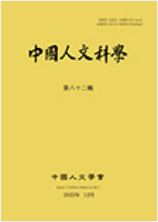자평명리학의 궁위 육친론은 형제의 월주 배속이 논란이 되다가 유교적 상하질서와 인륜을 중시하는 진소암이 月柱 배속에서 형제를 제외한 이래 하나의 정론으로 자리 잡아 현재까지 이어지고 있다. 반면 음양오행의 생극을 기준으로 가족관계를 살피는 십성 육친론은 크게 두 가지 상반된 시각이 대립하고 있다. 논란의 핵심은 자식을 官星으로 볼 것인지의 여부이다. 다수설은 자평명리학의 창시자인 서자평이 자식을 관성으로 설정한 이래 남송의 서대승과 명초의 유기, 청대의 심효첨으로 계승된 육친론으로 자식을 관성으로 보는 子女官星說이라 할 수 있다. 소수설은 청초 진소암이 제기하고 청말 임철초가 추종한 육친론으로 부모는 남녀 구분 없이 인수로 보는 父母印綬說이라 할 수 있다. 진소암과 임철초가 새롭게 제시한 父母印綬說은 유교적 상하질서와 인륜적 관점에서 인위적으로 설정한 논리체계로서 음양의 원리에도 반하는 것이며, 이로 인한 파생적인 모순이 발생하는 문제가 있다고 볼 수 있다.
In The position family theory(宮位六親論) of Zipíng Mingli Science, the distribution of brothers to Wolju(月柱) was controversial, but since Jin So-am, who emphasizes Confucian hierarchical order and humanity, excluded brothers from Wolju(月柱), it has been established as a single theory and continues to this day. But In The Sipseong family theory(十星六親論) there are two major opposing views. At the heart of the debate is whether or not to view children as <government star(官星)>. The majority theory is the view of children as <government star(官星)> and that is advocated by Seo Ja-pyeong and continued to Seo Dae-seung in the Southern Song, Yugi in the Ming Dynasty, and Shim Hyo-cheom in the Qing Dynasty. It can be said to be The children government theory(子女官星說). The minority family theory is a view of parents as <seal ribbon(印綬)> and raised by Jin So-am in the early Qing Dynasty and followed by Im Cheol-cho at the end of the Qing Dynasty. It can be said to be The parental seal ribbon theory(父母印綬說). The new family theory proposed by Jin So-am and Lim Cheol-cho is a viewpoint from the Confucian upper and lower order and human justification and There are two problems, one is against the principle of yin and yangs. the other is that A derivative contradiction newly occurred.
Ⅰ. 서론
Ⅱ. 궁위 육친론
Ⅲ. 십성 육친론
Ⅳ. 결론
參考文獻
(0)
(0)
